The Dim Road: Demonstrating the Core Loop
I recently released a new prototype of the Dim Road, available now on itch.io. It’s been a little while since I’ve written about the project, but this is a pretty big update! To celebrate the progress I’ve made on the game, I wanted to dive into the core gameplay loop as it’s demonstrated in the demo, and how it fits into my plans for future builds.
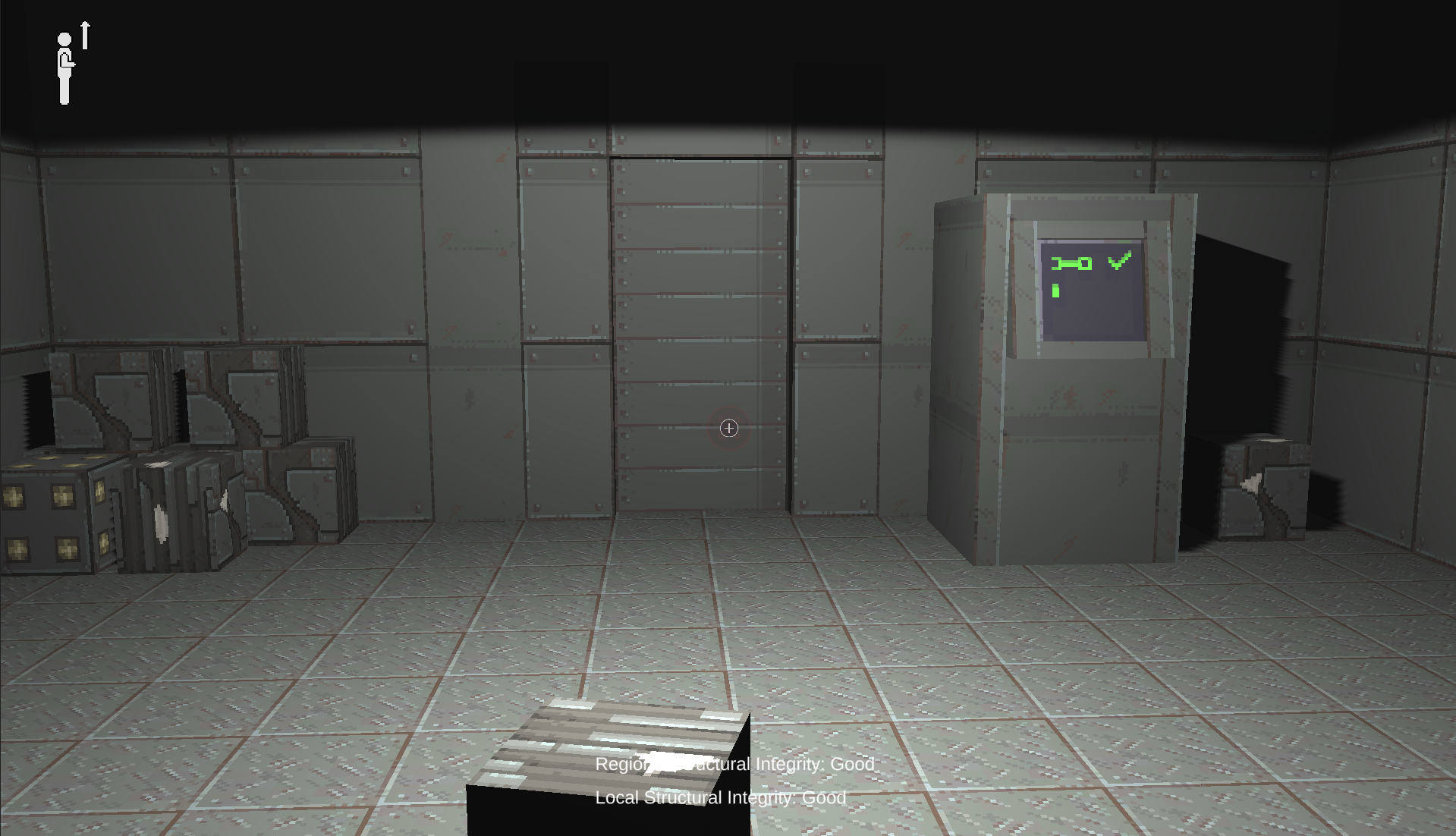
One of the reasons for the pause since the last update is that I’ve been pretty busy with the work I’m doing with Salix Augeat (I should have some updates on Project Cascade for you soon). The other reason is that I wanted to wait until the game was closer to a proper vertical slice. The initial feedback I’ve gotten is encouraging, so expect to see more updates on the Dim Road in the future. If you were planning on playing the latest demo build and haven’t tried it yet, you might want to stop reading here. I use examples from the demo to describe parts of the core gameplay loop, and it might spoil the joy of discovery if you prefer to figure these things out for yourself.
The core gameplay loop can be broken down into the following steps:
- Explore the area, searching for exits and points of interest.
- Assess the exit for puzzles.
- Scavenge and craft the necessary items.
- Clear an exit to use as an escape route.
- Gather supplies before moving on, at your own risk.
- Descend and repeat, but with increasing difficulty.
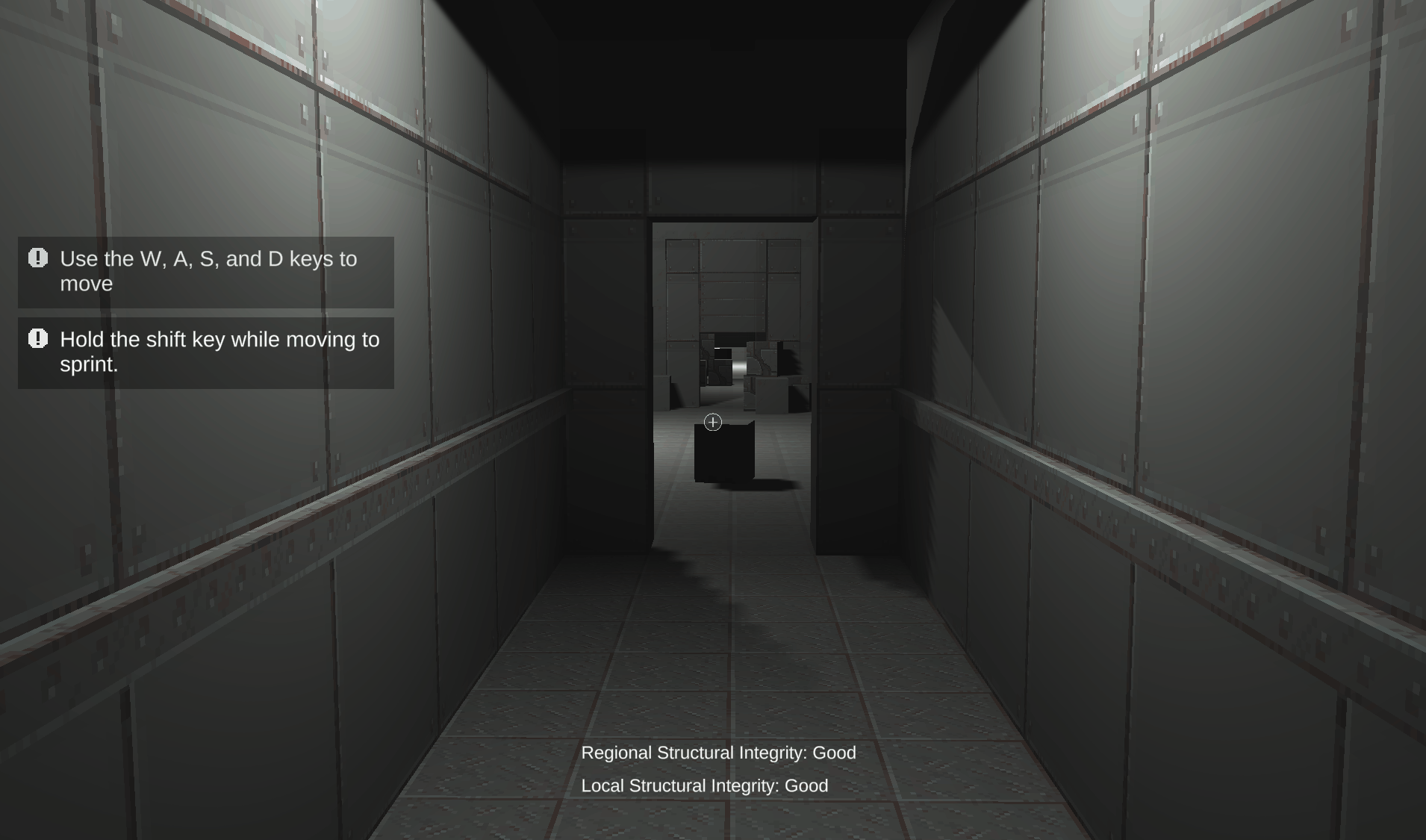
Explore: Getting familiar with the sector’s layout is an important facet of survival in the Dim Road. The tunnels themselves are the main antagonist, threatening to crush the player via cave-in, and the player will need to find their way to an exit quickly if the sector begins to collapse. Almost all of the access points between sectors are blocked, and require some combination of tools, items, and puzzle solving to open. Carrying capacity is limited, so the player will need to return to previous areas to after they know what they need. In the demo, the layout is static, and none of the items or puzzles are randomized, but future versions of the game will feature procedural generation to create sectors and all of their contents. Since players won’t be able to rely on memorization to navigate, exploring each sector will be crucial.
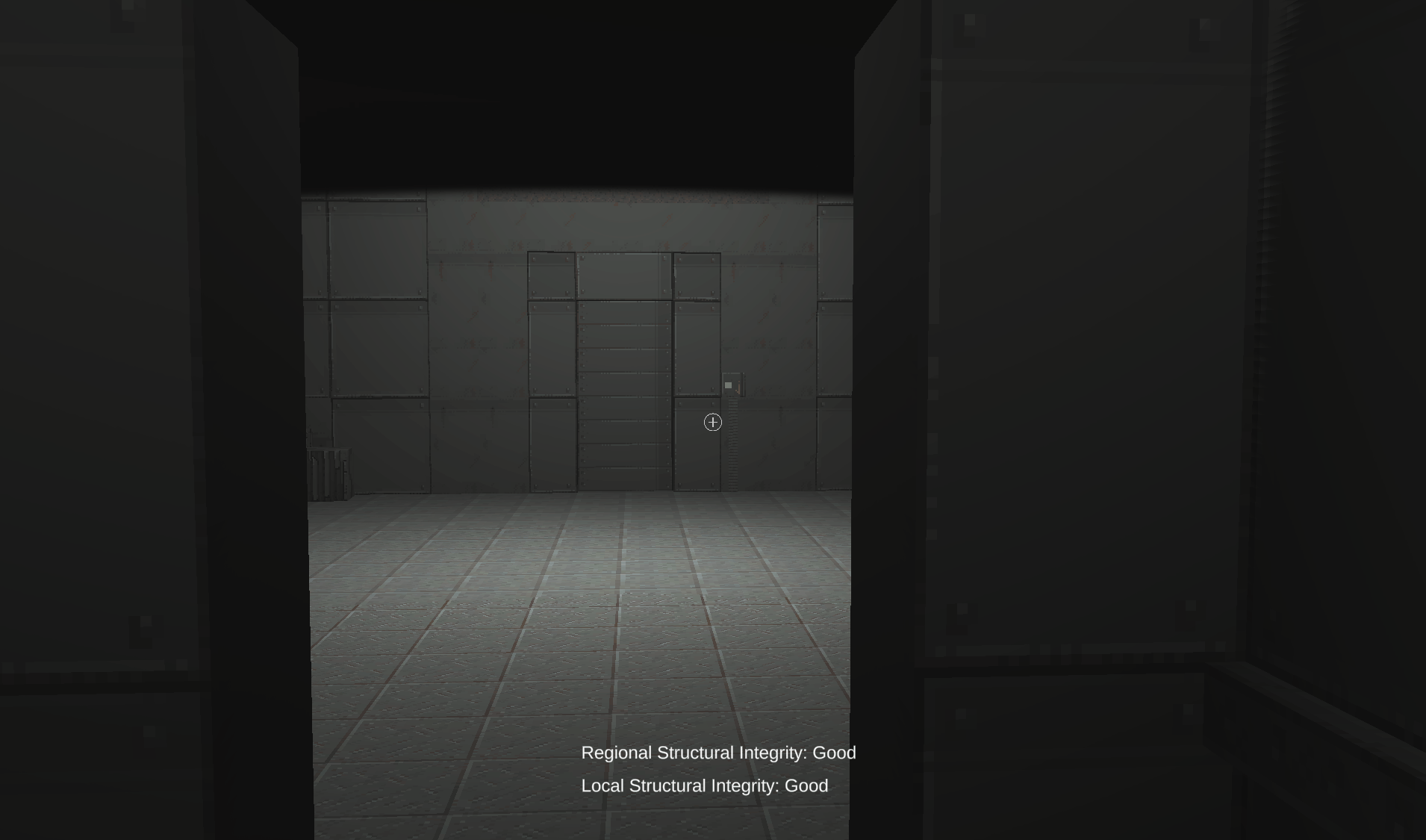
Assess: Clearing a blocked exit is the player’s primary challenge in each sector. In future iterations, the player won’t know in-advance what items, tools, or actions will be required to clear a given exit until they’ve had a chance to inspect it. The primary example in the demo is a locked door that requires a key-card *and* requires you to complete the circuit to provide power to the door itself in order to open. The player might have encountered one of the conductive cubes needed for completing the circuit prior to finding the puzzle itself, but likely didn’t understand it’s significance until assessing the puzzle. In future builds, it will be possible for the player to waste crafting ingredients on non-essential items, or destroy an important machine, preventing them from solving their exit puzzle and potentially ending their run. Each major puzzle will also feature multiple variations, missing different components or requiring different tools, so players will still need to take a close look at puzzles that appear familiar at a glance.
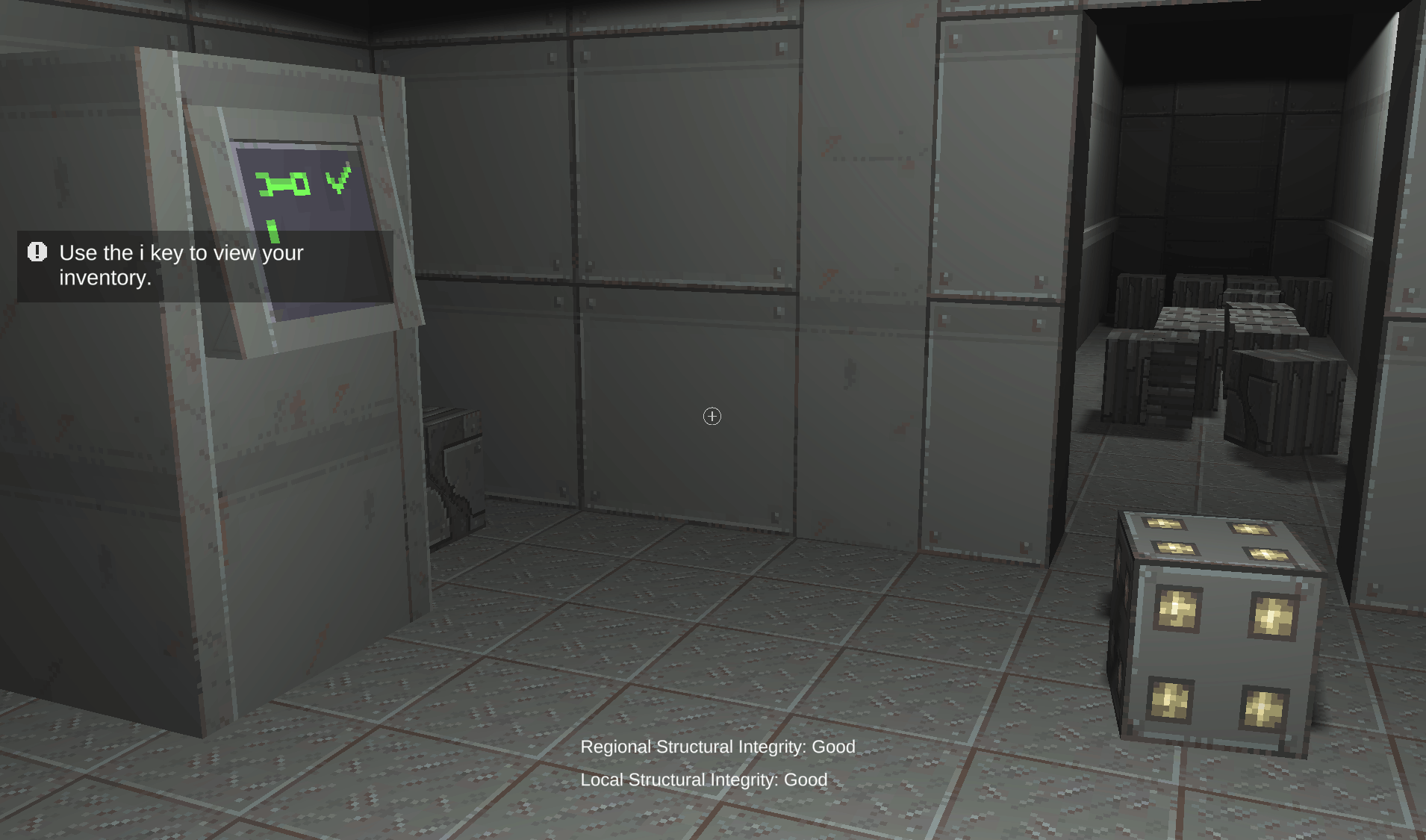
Scavenge: Once the player knows what puzzles they are trying to solve, they still have to find and/or make the required items. In the demo, the player is able to craft the items required for the main exits by breaking-up cubes of packed debris for specific items, and they are all fairly easy to reach. In later builds, accessible areas will still be seeded with the required resources for the main exit, but the challenge in extracting and assembling items will vary. Players might need to destroy otherwise useful items for the parts they need, salvage machines that could have been repaired, or even process scrap into refined materials needed for specialty parts. Important resources might be buried under useless debris that need to be moved, or tucked behind terrain features. The player may even have to remove a wall panel or floor grate with a tool to get access to the items they need to progress. Trying to accomplish this in a cramped space, or while trying to avoid hazards should keep things interesting.
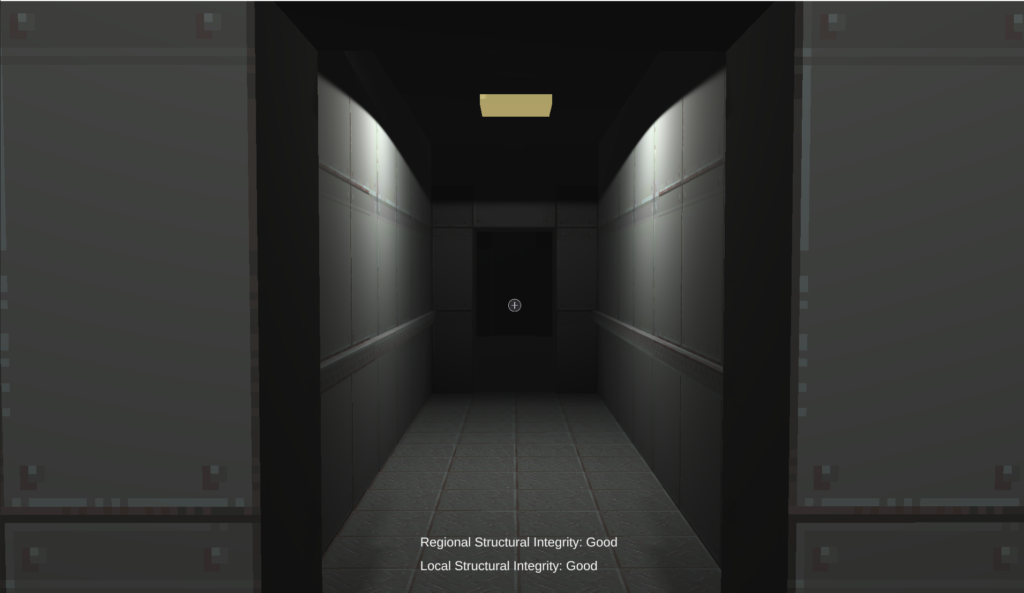
Clear: Your run ends if the tunnels collapse on you before you’ve secured an exit to the next area. Since the player doesn’t have a perfect sense of how much damage an area can really take, performing non-essential actions without a clear exit is risky. Once a collapse sequence has started, trying to double-back for a missed item will end the run, and there won’t be time left to perform lengthy tool actions or precise block placements. It’s also possible to trigger the collapse of just one room or hallway prematurely if the player is doing heavy work in a high-traffic area. This can cut-off access to resources that are needed to clear the exit, or strand the player in a dead-end, effectively ending the run. The player will need to weigh the security of having a clear exit against the cost of damaging the corridors to back-track for items, cubes, or upgrades they want to take with them into the next sector.
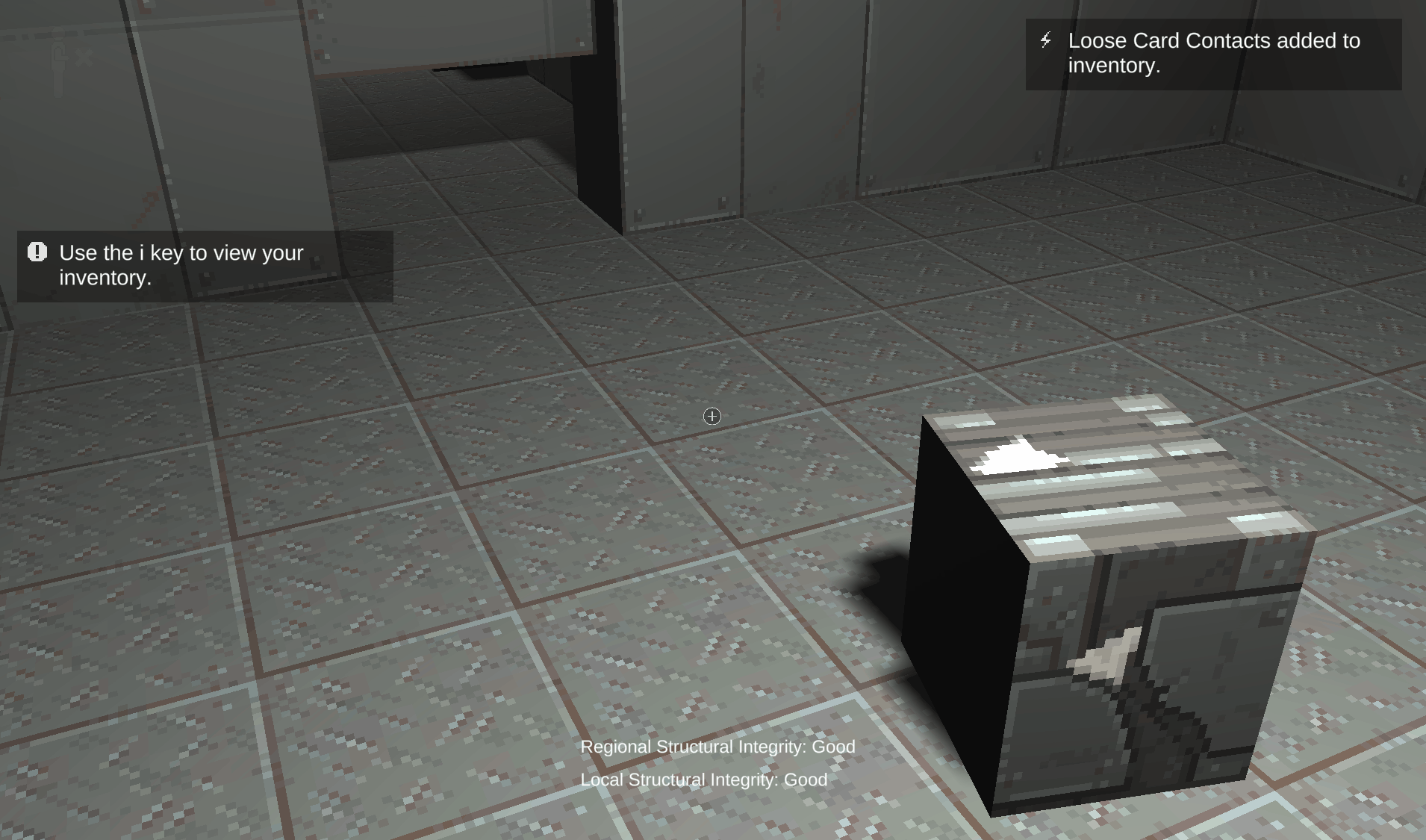
Gather: Tools will eventually break, upgrades will wear-out, and having some of the right parts for the next puzzle can save a run from rotten luck. For those reasons, players will be tempted to return to rooms they discovered earlier to see what kinds of advantages they can scrape together for the next puzzle. Since the demo only has the tutorial sector, there isn’t much incentive for the player to continue gathering items after an exit is clear other than to satisfy their own curiosity. In later iterations, sectors will be randomly generated with an assortment of useful and interesting features that aren’t essential for the nearby exit puzzles. There might be a portable repair station, upgrades they could craft, or side-objectives worth back-tracking for. The risk involved in returning for items increases as the player reaches later stages of the game, since tight corridors, hazards, and more complex layouts can threaten the player’s ability to make a hasty exit.
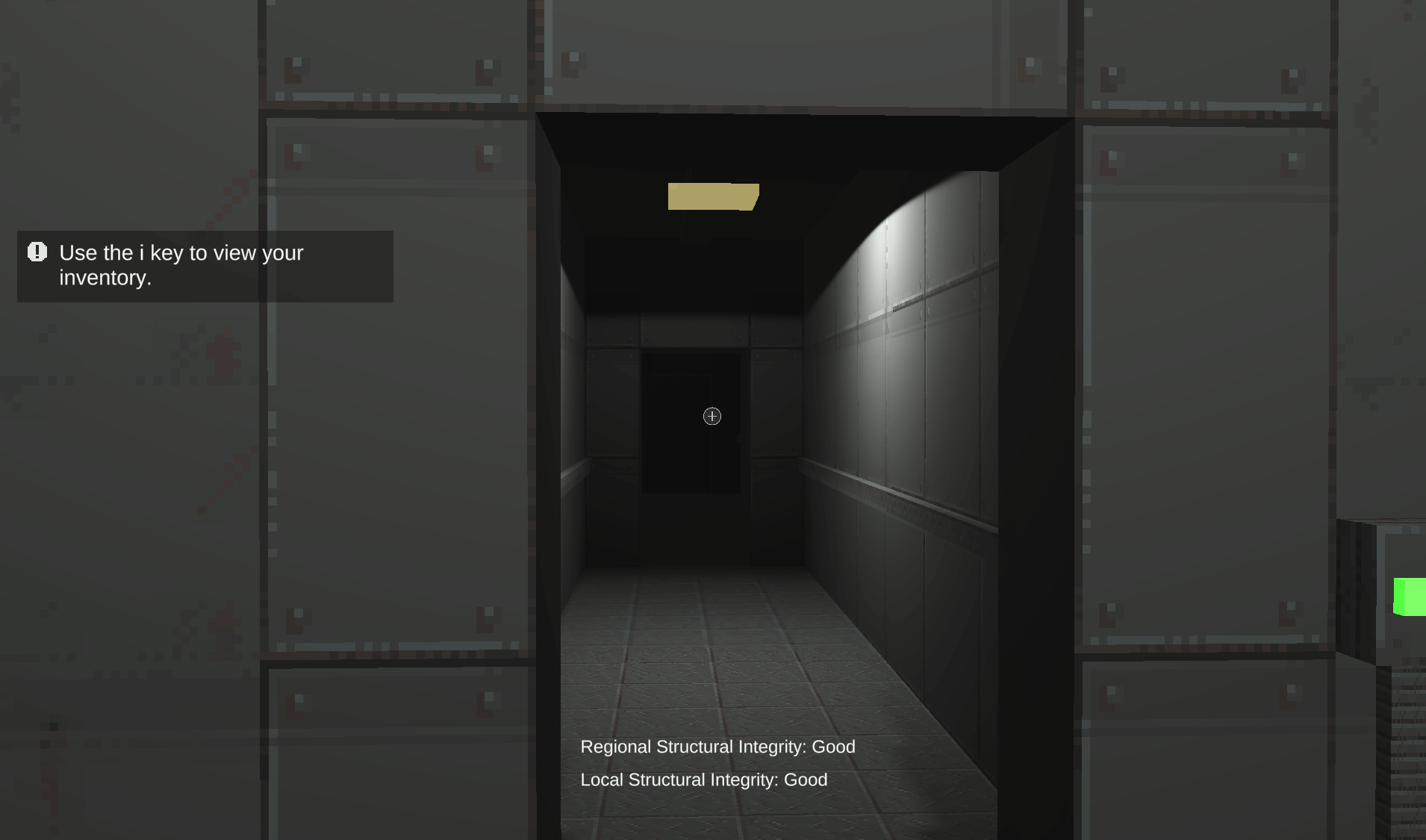
Descend: I wasn’t able to include this part in the demo, but the player will always be traveling down. Deeper and darker, sector by sector, the player will be driven further into the ruins by their need to survive. As they descend to a new layer, every few sectors, the scenery will change. Each layer will add its own signature mechanics to the puzzles, introduce new hazards, and increase in overall difficulty. The spaces may get more cramped, more unstable, and the useful items will be fewer and further between, until the player reaches the end. If they get crushed along the way, or aren’t satisfied with their ending, the whole process will begin anew with a fresh run. On repeat runs, the player will be able to skip to previously cleared layers via disposal chutes, which they have to find and unlock during the run if they want to save some time.
The public demo is still far from complete. As-of version 02-1 there are no sound effects or music, no real settings in the menu, and the features that make it a rogue-like haven’t been implemented yet. I do have plans for the missing features, so here is what you can expect from the next update.
- Sound Effects and Dynamic Music.
- Improvements to UI elements.
- A basic settings menu.
- Hazards, and a damage system.
- More content in the tutorial area, including more terrain features, items, and an additional exit puzzle.
And if all goes well…
- An endless mode, featuring an early version of procedural level generation.
My primary focus for the next few weeks will be Project Cascade, but I’ll be quietly working on these additional features as time allows. I can’t really predict when the next prototype will be ready, but until then, watch your head!